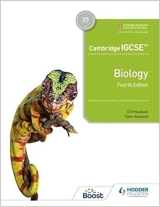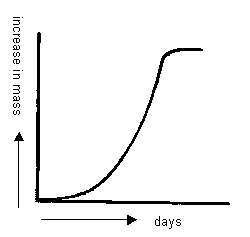|
Here you will find the answers to the 'in-text' questions which occur in IGCSE Biology (2nd edition) and GCSE Biology (3rd edition) by D. G. Mackean, published by Hodder Education, London, UK. Chapters: | Index | 1 | 2 | 3 | 4 | 5 | 6 | 7 | 8 | 9 | 10 | 11 | 12 | 13 | 14 | 15 | 16 | 17 | 18 | 19 | 20 | 21 | 22 | 23 | 24 | 25 | 26 | 27 | 28 | 29 | 30 | 31 | 32 | 33 | 34 | 35 | 36 | 37 | 38 | 39 | 40 | 41 | |
Chapter 35. Growth and developmentPage 309
3. a At year 1 boys and girls weigh abut 7 kg. At age 5 boys weigh 20kg and girls weigh 16 kg (average 18). The average growth over this period is 18-7kg =11 kg. b At age 10 both sexes weigh about 33kg so the average growth is 33-11kg = 22kg. 4. a The advantage is that you are measuring dry mass, which shows the increase in living matter and its derivatives in an organism without having to account for short-term changes in the weight of water in the tissues. b The disadvantage is that the organism has to be destroyed in order to obtain this figure. 5. The ratio of head to body at 2 years is about 12/52 (approx. 23%) and at 20 it is 8/52 (approx. 15%). 6. The caterpillar increases greatly in size and colouration up to the pupal stage, which becomes a completely different shape. In becoming a butterfly, the insect has developed a distinct thorax and abdomen, three pairs of jointed legs, a pair of antennae and, of course, wings. 7. Although cell division is taking place rapidly in the shoot tip, the cells remain small and without vacuoles. Just behind the shoot tip, the cells develop vacuoles which extend the cells mainly longitudinally in line with the main axis. This is the region of most rapid increase in length. |
Downloads |
| Search this site |
| Search the web |
To contact me please email: DonMackean@biology-resources.com
© Copyright D G Mackean & Ian Mackean. All rights reserved.

